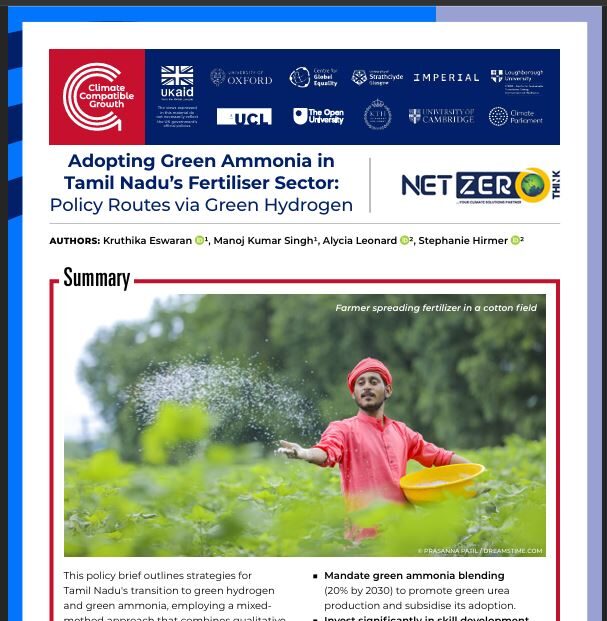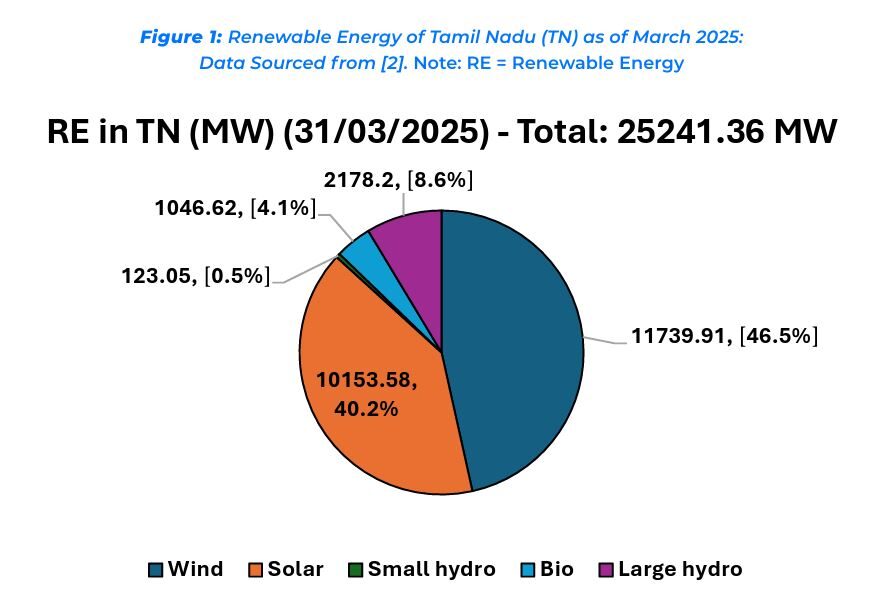This Policy Brief was written by Kruthika Eswaran and Manoj Kumar Singh of Net Zero Think Bangalore, and Alycia Leonard and Stephanie Hirmer from CCG and the Energy and Power Group at the University of Oxford.


India launched the National Green Hydrogen Mission (NGHM) in January 2023, aiming for zero emissions by 2070 and intending to establish itself as a global centre for green hydrogen production and export. With its significant renewable energy resources, industrial base, and strategic coastal location, Tamil Nadu is uniquely positioned to lead India’s transition to a green hydrogen economy.
This brief outlines policy actions for Tamil Nadu to transition to green hydrogen and green ammonia, particularly in the fertiliser industry, using stakeholder input and cost analysis. The fertiliser sector was chosen primarily because agriculture serves as the main livelihood of the state and contributes to 13% of the state’s GDP. Accelerating this transition through targeted policies and incentives will help achieve India’s 2070 targets.
This policy brief outlines strategies for Tamil Nadu’s transition to green hydrogen and green ammonia, employing a mixed method approach that combines qualitative insights from stakeholder engagement with quantitative cost analysis modelling.
To enhance and optimise green hydrogen energy infrastructure in Tamil Nadu, particularly in the fertiliser sector, we suggest that the state government:
■ Establish Viability Gap Funding (VGF) and Production-Linked Incentives (PLI) to support early-stage green hydrogen and domestic electrolyser manufacturing.
■ Mandate green ammonia blending (20% by 2030) to promote green urea production and subsidise its adoption.
■ Invest significantly in skill development programmes to build a workforce ready for green hydrogen and ammonia technologies.
■ Expand funding for research and design (R&D) in advanced electrolyser design, renewable energy integration, and hydrogen infrastructure to achieve cost parity with grey hydrogen.
■ Facilitate access to innovative financing mechanisms such as green bonds and carbon credits to lower financial barriers.
READ THE FULL POLICY BRIEF BELOW
No publications found.
